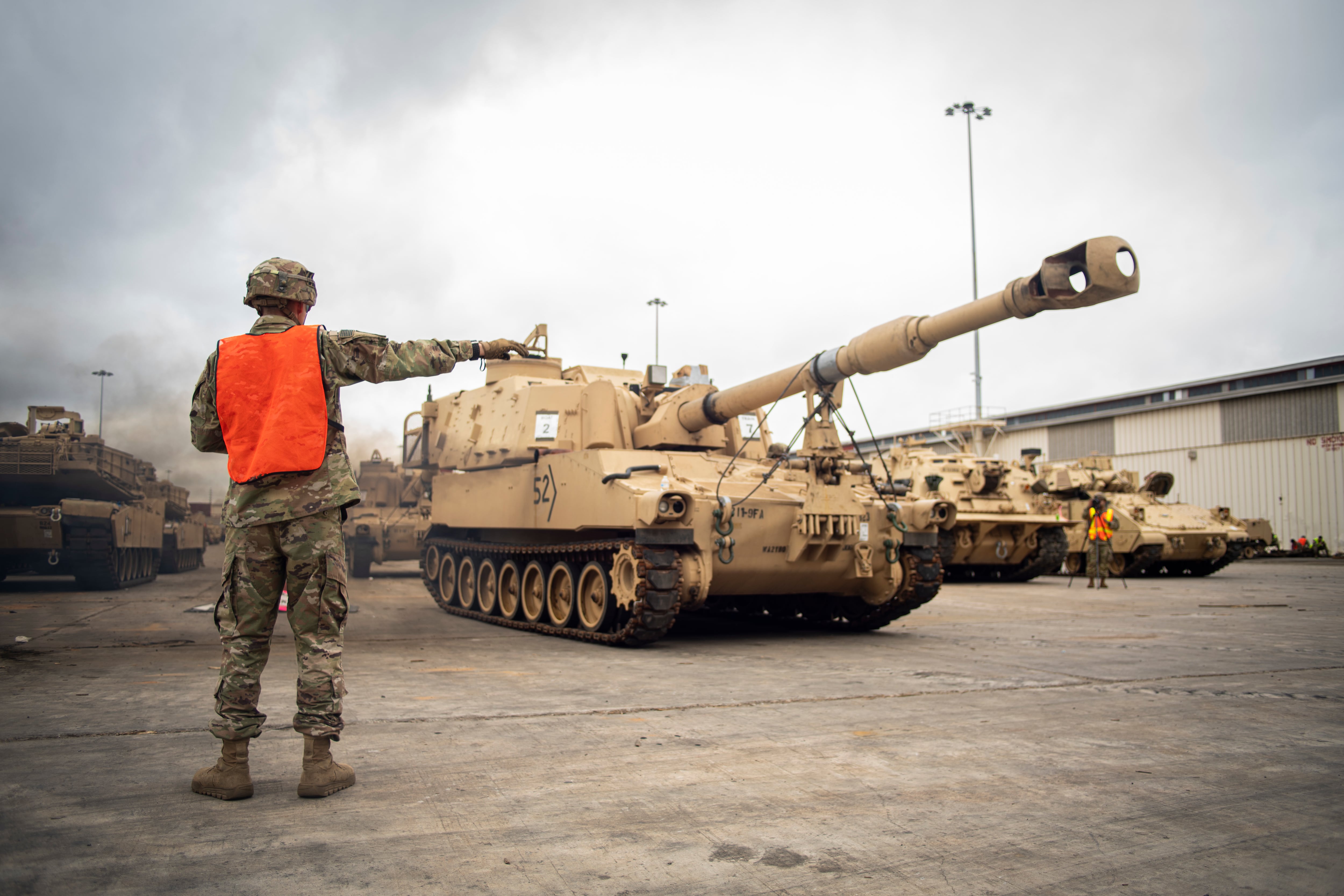WASHINGTON — The recent war in Ukraine, combined with last year’s Afghanistan evacuation and a host of other less headline-grabbing missions has given Army installations a sneak peek at what large-scale combat mobilizations will require.
For a few years now, Army officials have cautioned that the ease with which commanders have taken their tanks, trucks and soldiers from the fort to the port can’t be taken for granted as the force faces peer competitors with tools to disrupt that flow.
Sustainment experts Maj. Gen. Gavin Lawrence, head of Surface Deployment and Distribution Command, and Dan Reilly, executive director of support operations at Army Sustainment Command, shared some of the recent work in this area with an audience at the annual Association of the U.S. Army conference Tuesday.
New initiatives put in place over the past few years have streamlined the process for installation commanders to have a “snapshot” of their facilities’ readiness to mobilize.
The Facility Improvement Plan, or FIP, is a document that shows those base commanders what needs to be improved to get soldiers and equipment on and off their installation.
“It helps us see ourselves so much better,” Reilly said.
At the same time, small changes in what might seem minor details have quickened the pace for getting the right supplies when needed.
The sustainment commands have pre-written a stack of acquisition contracts so that leaders can pull from that library when they need to order unforeseen supplies or replenish stocks of gear that just went out the door.
That move alone has sped up the acquisition process during a mobilization by 60 days, Reilly said.
Between January 2020 and September 2022, the Army supported 154 brigade combat team or brigade-equivalent deployments.
Here’s the list broken down by the numbers:
- More than 204,471 pieces of equipment delivered
- Supporting six combatant commands
- Using 23 CONUS and 85 OCONUS seaports
- 1,500 trucks daily
- 967 trains using 57,975 railcars
- 31,000 ammunition containers
To U.S. European Command alone:
- 28 M1A1 Tanks
- 250 M113s
- 2,766 ammunition containers
- 24 HIMARS
- 125 Humvees
- 20 M1152 Ambulances
Source: Army Sustainment Command
The on-demand supply problem exists where the soldiers are headed, too.
The Army Pre-Positioned Stocks, or ammunition, equipment and gear stored at locations abroad, was tapped for recent U.S. deployments to Poland and other parts of Eastern Europe in support of NATO’s response to the Ukraine invasion.
Reilly said equipment issued to 1st Armored Brigade Combat Team, 3rd Infantry Division, out of Fort Stewart, Georgia, in February was the largest gear supply to a unit since Army forces headed to Iraq in 2003.
“This has proven that APS is a huge enabler for our ability to project power, (and) also a huge deterrence,” Reilly said.
Lawrence called the sustainment pieces of the Army mission the “connective tissue” between home station and combat.
Todd South has written about crime, courts, government and the military for multiple publications since 2004 and was named a 2014 Pulitzer finalist for a co-written project on witness intimidation. Todd is a Marine veteran of the Iraq War.




